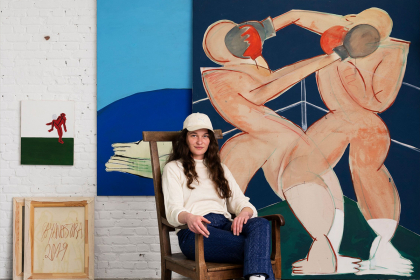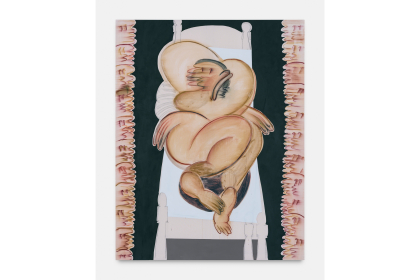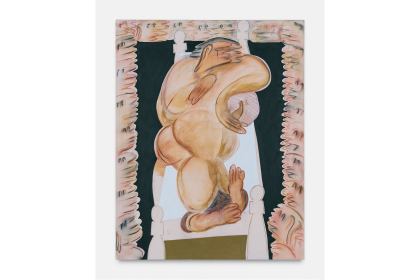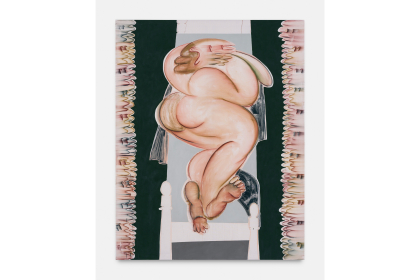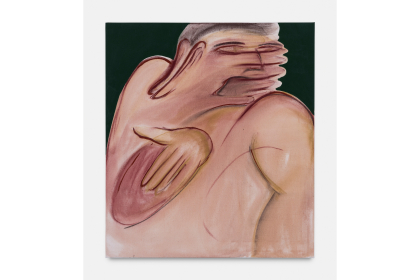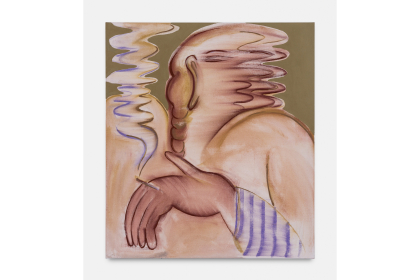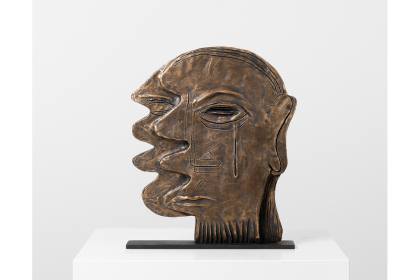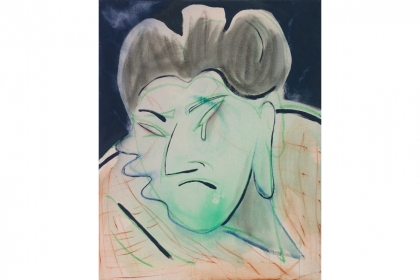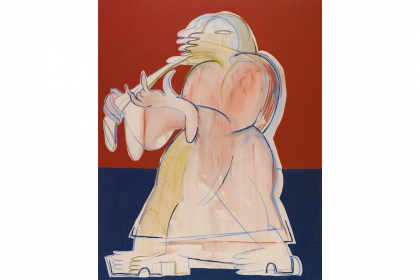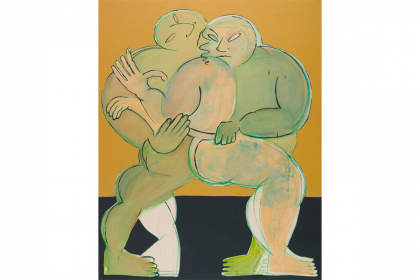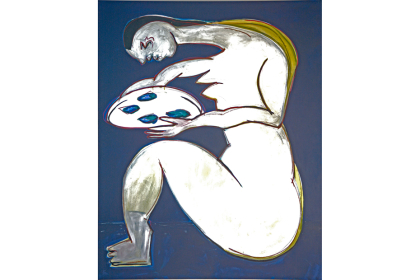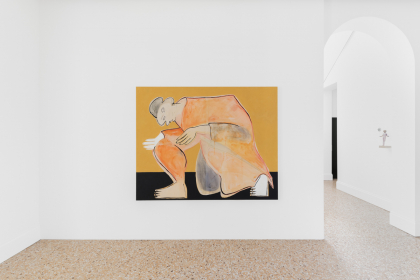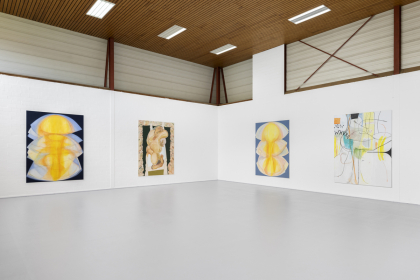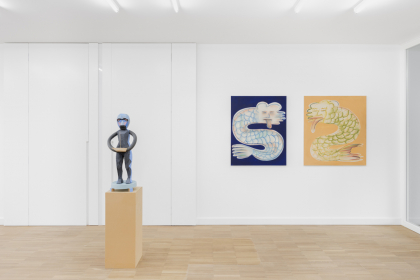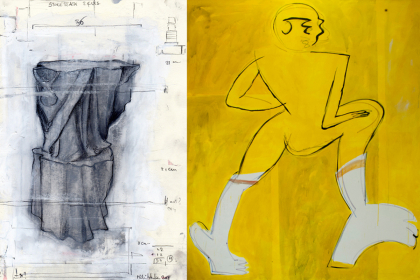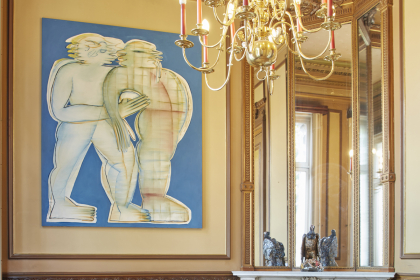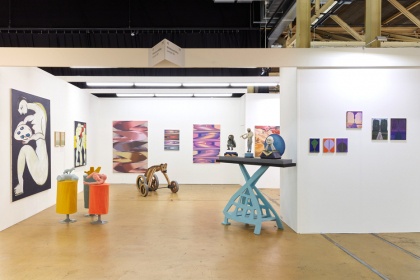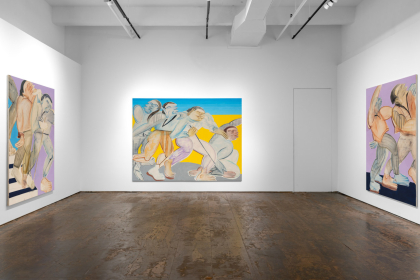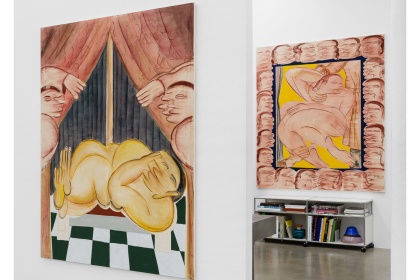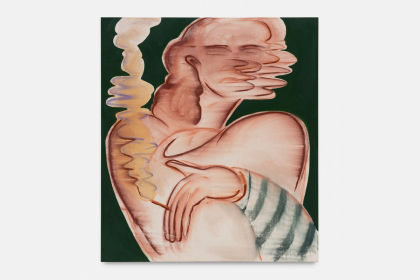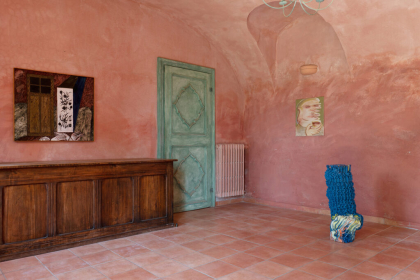Anastasia Bay (°1988, Paris)
Lives & works in Brussels (BE)
Photo: Hugard & Vanoverschelde
Anastasia Bay (b. Paris, 1988, FR) lives and works in Brussels. Since we first exhibited her work in 2019, Bay’s career has taken off fast. She has shown her work in several Western European countries, in the United States and China, and it is also represented in important private collections around the world. Her paintings depict human figures in a manner that recalls frescoes and comic strips in equal measure. The cross-pollination of references in her oeuvre – such as the mixing of classical history with contemporary culture, and sport with literature – makes it unique. The paintings are often large in size; composed of sketchy contours that are completed in various ways against a more uniformly coloured background. In 2022, she made her first sculpture in bronze, in which she stays true to her typical visual language.
For Third Person, the new exhibition in Whitehouse Gym, Anastasia Bay (1988) invites her fellow artists Julien Saudubray (1985) and Tom Król (1991). Since their meeting at an opening in Brussels in 2016, they have formed a "family" of painters. Connected by shared interests, ideas and views on painting, Bay, Saudubray and Król as a group do not apply a rigid set of rules and dogmas, but start from an idea of generosity and exchange between like-minded artists. For these three young artists, it is all about the pleasure of creating and painting, for themselves but also for the viewer. In doing so, they build on their academic training and their knowledge of art history, but claim a kind of freedom. They choose for themselves what they use and what they renounce. They each seek out and attempt to push the boundaries of painting.
The exhibition at Whitehouse Gym shows how Bay, Saudubray and Król transcend themselves as painters. In addition to the challenge offered by the new very large formats, they seek refuge in a different discipline. For the first time, they are each showing a bronze bas-relief.
The title of the exhibition, Third Person, refers to the idea in painting of the existence of a third neutral party, who, by creating distance between the painter and the work of art, helps to shape the latter. This third body can take all kinds of forms, from a person to a period of time to a space. The gap thus created changes the artist's perception of his/her work. Moreover, it means a change in his/her role from painter to spectator. Here, the work takes the space and time to indicate what and where it wants to be.
The exhibited paintings of Anastasia Bay are inhabited by naked female figures. They lie on a bed in disturbing and twisted poses. Where their bodies have been painted with care, their faces are crudely outlined. In this way, they remain unrecognizable and anonymous. Both on the left and the right, Bay paints heads that seem to be peering at the women. They too remain anonymous and lack clear facial characteristics. The plastic and explicit poses of the female nudes transform the viewers into voyeurs. Their bodies attract, but at the same time repel. In this way, Bay's works denounce social voyeurism and the objectification of the female body.
Bay has drawn inspiration for this series from a medieval visual language. She often draws on themes from art history, mythology and popular culture, mixing periods and genres without hesitation or hierarchy. She explores figurative painting and works with familiar scenes from the classical canon. The construction of her paintings in Third Person is reminiscent of the many medieval and renaissance Madonna’s with Child, such as Giotto's Ognissanti Madonna located at the Uffizi Museum in Florence. Bay here replaces Giotto's enthroned and chaste Madonna with a female, explicitly nude body. The traditional angels make way for anonymous faces. The use of the art-historical image tradition of the Madonna and Child shows how Bay manages to bend painting to her will and create her own visual language.
Extract from the text of Astrid Goubert, for 'Third person' (June 2022)

